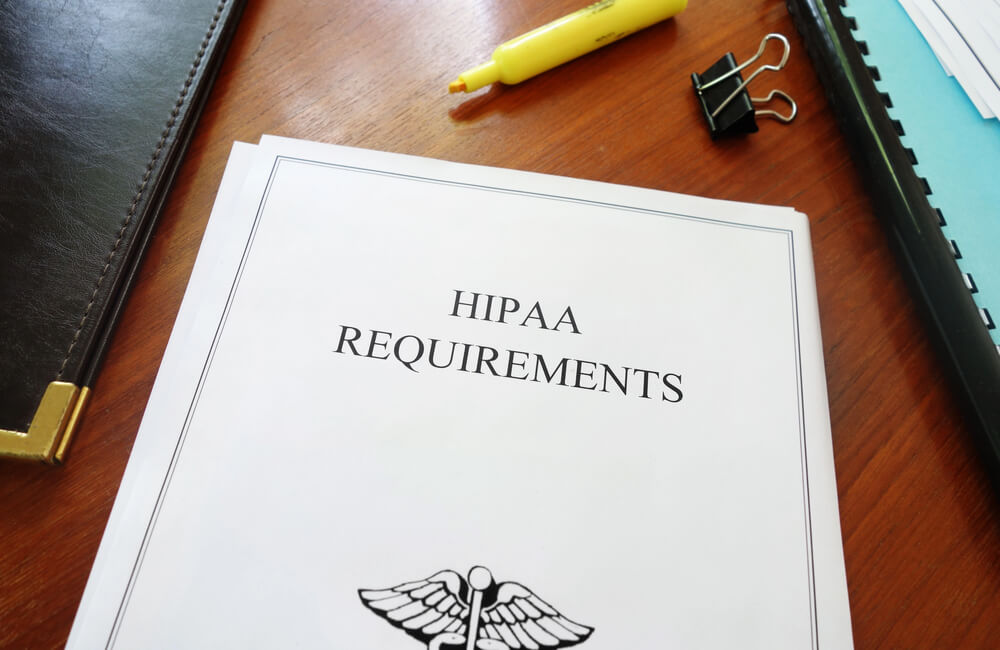The Difference Between HITRUST vs. HIPAA
Stakeholders of healthcare organizations and enterprises in other industries should know the difference between the Health Information Trust and the Health Insurance Portability and Accountability Act. HITRUST is a comprehensive security framework for mitigating information-related risk. HIPAA is a United States law that covers protected health information. Find out more about HITRUST vs HIPAA and learn how HITRUST certification supports HIPAA compliance.

The Basics of HITRUST vs HIPAA
The HITRUST Common Security Framework facilitates compliance with other leading information security standards. While governments do not mandate HITRUST certification, some of the largest health insurance payers began requiring that all vendors be HITRUST certified as of 2016. HITRUST has become a standard in the healthcare sector and is expanding to other industries. The current version of this framework, HITRUST CSF v11.1.0, was released in January 2023 and became effective as of April 4, 2023.
The International Organization for Standardization 27000-series standards are global benchmarks for information security management that have been incorporated into HITRUST. The HITRUST CSF also includes the National Institute of Standards and Technology framework for managing cybersecurity risks and the System and Organization Controls Trust Services Criteria for security of the Auditing Standards Board of the American Institute of Certified Public Accountants. The HITRUST CSF also accounts for HIPAA requirements for covered entities and business associates that collect, create or transmit health information.
HIPAA compliance requirements include developing remediation plans, establishing policies and procedures, employee training, documentation, business associate management and incident management. While these requirements are enforceable for entities beholden to this legislation, there is no official HIPAA certification. The key difference between HITRUST vs HIPAA is that the HITRUST CSF and certifications fill this gap.
What To Know About HITRUST
HITRUST is a privately held company located in Frisco, Texas. This organization includes the not-for-profit HITRUST Alliance and the for-profit division HITRUST Services Corp. The HITRUST Alliance publishes the HITRUST CSF.
The HITRUST framework combines requirements from several frameworks, standards and regulations. A standardized compliance framework serves as a benchmark for compliance with leading security and privacy practices. HITRUST offers three validated assessments and certifications as of CSF v11:
- HITRUST Essentials 1-Year (e1) Assessment Essentials
- HITRUST Implemented 1-Year (i1) Assessment Leading Practices
- HITRUST Risk-Based 2-Year (r2) Assessment expanded practices
These certifications differ in terms of stages of implementing security controls and the number of applicable requirements. The e1 assessment covers cybersecurity fundamentals for organizations starting to implement security controls and includes 44 CSF requirements. The i1 assessment provides a higher level of security assurance based on 182 CSF requirements. The r2 assessment is a comprehensive assessment with an average of 375 requirements in the first year.
What To Know About HIPAA
HIPAA refers to a U.S. Act of Congress that was signed into law in 1996. This legislation modernized the flow of healthcare information and established protections for personally identifiable information. Organizations that manage protected health information or electronic PHI are required to comply with HIPAA, which is a key distinction between HITRUST vs HIPAA.
Data breaches and violations are the main forms of non-compliance with HIPAA. Entities beholden to this law must maintain physical, administrative and technical safeguards to protect PHI and ePHI. Use and disclosure violations occur when PHI is distributed to unauthorized parties. Covered entities must also present patients with a Notice of Privacy Practices.
The breach notification rule of HIPAA, which was modified by the Health Information Technology for Economic and Clinical Health Act of 2009, sets forth notification requirements for breaches. Entities covered by HIPAA are required to notify impacted individuals and may also be required to notify the media and the Department of Health and Human Services based on the number of individuals affected by a breach.
Compliance Standards for PHI
The core compliance standards for HIPAA prohibit covered entities from disclosing PHI to parties other than patients and authorized representatives without patient consent. Audits based on HIPAA requirements can be done in house or with an external vendor, while compliance with HITRUST CSF can be initiated in house with certifications based on independent assessment.
HIPAA compliance is required by law but does not have a dedicated certification. One of the main differences between HITRUST vs HIPAA is that HITRUST CSF is a certification framework that combines HIPAA requirements with other leading privacy and security standards and frameworks.
The privacy, security and breach notification requirements for HIPAA all fall under the HITRUST CSF. This framework supports the administrative, physical and technical specifications for securing PHI and ePHI. Compyl provides a comprehensive compliance solution for HIPAA and HITRUST.
Promoting Industry-Agnostic Compliance
While HITRUST originated in the healthcare sector, the HITRUST CSF can apply to any operation that creates, accesses or processes sensitive data. Enterprises in every industry can refer to the HITRUST CSF to improve information risk management programs, but entities covered by HIPAA should consider HITRUST certification.
The main advantage of HITRUST is its streamlined framework. When you consider HITRUST vs HIPAA, it can be helpful to think of the former as a comprehensive framework and the latter as one specific application. HITRUST draws on rules and requirements from over 40 frameworks. Organizations that meet the standards of the HITRUST CSF or obtain certification meet all requirements for compliance with HIPAA and other industry-leading standards.
Even organizations that do not process PHI or ePHI can benefit from obtaining HITRUST certification. The process of pursuing HITRUST compliance calls for upgrading and documenting policies, formalizing procedures, developing and implementing business continuity and incident response plans, and implementing security controls. All of these measures are crucial for taking a proactive approach to managing and minimizing risk.
The Verdict on HITRUST vs HIPAA
The main takeaway from a comparison of HITRUST vs HIPAA is that HITRUST encompasses HIPAA compliance along with other leading security standards. As there is no official HIPAA certification, organizations can gain HITRUST certification to demonstrate HIPAA compliance. Compyl offers an all-in-one information security and compliance monitoring solution for healthcare-related organizations covered by HIPAA and other enterprises seeking HITRUST certification. Get a free security assessment and request a demo today.




